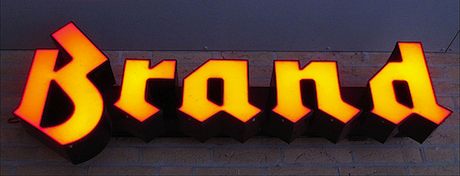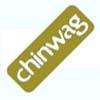What the f8 Facebook Conference Announcements Mean for Brand Advertisers
The impact of Facebook's announcements at f8 are still being digested, Mat Morrison, Head of Social Media at Starcom MediaVest and a speaker at Chinwag Insight: Facebook Marketing this week, takes a look at what these changes mean for brand adverisers.
Despite reaching half a billion Daily Active Users (DAU), Facebook's real value lies not simply in its reach, but in the depth of the data that it holds about that audience.
Much has been written about Facebook being driven by competition from other social networks, but it should be remembered that the real competition is not for users' time and attention, but for advertisers' budgets.
Although no mention of their advertising product was made at the f8 conference, there are nevertheless several important implications for marketers.
What has changed
1. The News Feed — the central element of users' Facebook experience — has been split into two elements; the Feed and Ticker.
The Ticker is a stream of updates, similar to Twitter's "What's happening right now." The News Feed is for stickier" content — things that (Facebook thinks) will still be of interest later on.
This helps to remove one of the key barriers to users' sharing — not wanting to be seen as overactive, or over-sharing. As Facebook's technology chief put it;
I don't want to spam my friends' news feeds every time I pick up a spatula, but its awesome to share my recipes.
2. User profiles have been redesigned as the "Timeline."
Users' profile pages have changed from being their basic information (as Zuckerberg described it, "the first 5 minutes of a conversation"), to the most recent activity. Yesterday, a complete overhaul of profile pages was announced, as they are replaced with the Timeline.
This gives a view of all the users' activity - not just on Facebook, but for their entire life; encouraging users to use it to present themselves and their life story, from baby photos right through to pictures from last weekend.
The other aspect of this is that it is cleverly designed to encourage users to enter more information about themselves— to "fill the gaps" where Facebook's own data might be incomplete. While users might not presently see a reason to tell Facebook their date of birth, or what school they went to, by creating an incomplete timeline this implicitly encourages them to share this information — not with Facebook, but with their friends.
3. The next stage for the Open Graph
Facebook launched the Open Graph at last year's f8, enabling websites to become a part of Facebook's network with social plugins.
This year, the Open Graph has been extended to allow new actions for Facebook applications. These go beyond the "like" button, with any action within an application now possible; applications can tell Facebook that a user has "watched" a video, "read" an article, "listened" to a song.
Importantly, these actions are not so much about News Feed sharing; instead they are generating the kind of low-level update content that will appear in the Ticker. But they provide streams of detailed information that will feed into the user's Facebook's profile, and that in turn will enable more precise targeted of paid advertising.
In 2008, Mark Zuckerberg stated that he expected users to share twice as much information each year as they did the previous year. The new changes mean that users will share more information with each other; and, importantly, with Facebook.
What should brands take from this?
For brands, the focus on Facebook must be shifting from using it as a publishing platform to a targeting tool. We believe that Facebook is reducing the opportunity for companies to earn reach and engagement from their Pages. In the longer term, brands who rely on their Facebook presence to communicate with their audiences freely and for free may find themselves in trouble. As things currently stand, all their users belong to Facebook.
Pages have seemed slightly peripheral to Facebook's ambitions since the announcement of Open Graph back in Q2 2010; with last night's announcements it is now even clearer that the platform is being designed to aggregate and respond to user activity around the Web, and not simply to host that activity.
For Facebook, Pages are an uncomfortable compromise; they are merely brands' embassies in Facebook-land, and not the owned space and owned relationships that would better benefit all parties. Facebook has been happy to help brands recruit those fans -- but Page Likes are not the rich data that Facebook wants to add to its users Interest Graphs.
The changes this week will put have an immediate impact on Page owners used to earning audience attention and engagement with status updates. In the short term, we expect Pages' Daily Average Users to rise sharply above the 5%-20% reach that we're used to seeing, then fall sharply to a lower level than before as fans begin to hide brand posts on their News Feeds. Furthermore, we suspect well-run brand Pages may suffer in-line with the general "spring cleaning", as they are penalised for the sudden appearance of multiple brand posts in users' Feeds.
Combined with the changes announced last night at f8, this will net out as an overall reduction in earned impressions and reach across all or most Brand pages.
We expect to see four responses to this:
1. Poorly-run brand Pages may begin to post more frequently in order to increase fan reach and DAU.
Our research shows that while this can work, it is short-termist: while reach increases only at a decreasing rate of return, unsubscribes rise sharply in line with post frequency.
2. EdgeRank optimisation will continue to show results.
Well-run Pages (where there is already some understanding of the EdgeRank algorithm and audience behaviour) must continue to optimise against day part, day of week, and content to make the most of their windows of opportunity. However, we believe that these windows will become narrower, and more crowded as users share more information, and as other Page owners come to realise the benefit of optimisation
3. Media supported pages must pay to play.
It seems increasingly clear that Facebook's Sponsored Stories and Sponsored Page Posts will be required to kick-start the organic engagement required to cut through EdgeRank and earn volume reach; much as brands are using Sponsored Tweets to generate organic conversation on Twitter. Media budgets will be less singularly focussed on recruitment, and begin to focus on engaging existing fan bases. Just as most mature search strategies involve both PPC and SEO, Facebook Marketing must optimise the relationship between paid, owned and earned.
4. Brands in the right verticals must move quickly towards Open Graph-enabling their web and mobile apps.
Businesses in the online publishing and entertainment, travel, retail industries, online service providers, and mobile app developers need to understand (to use Facebook's terminology) what verbs now govern their relationship with their audience, and work hard to engage both their on-site audience, and -- importantly -- their audiences' wider social graph.
Original blog post What last night's f8 Facebook Conference means for Brand Advertisers by Mat Morrison @mediaczar, re-blogged with permission. Photo (cc) Rupert Ganzer.



